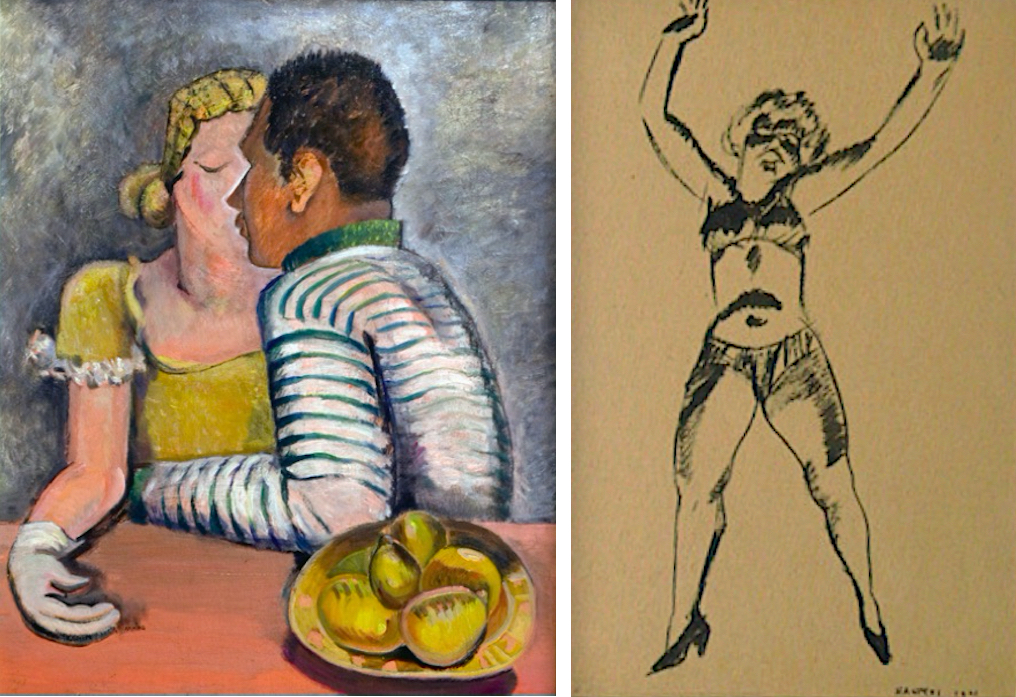MAIN GALLERY and PROJECT SPACE
Nimbus: The Figures of Clara Mairs and Clem Haupers
Curated by Annika Johnson
June 23 - August 4, 2017
NEW YORK - 57W57ARTS is pleased to announce Nimbus: The Figures of Clara Mairs and Clem Haupers. Installed throughout the Main Gallery and Project Space, this exhibition has been curated by Annika Johnson and features drawings and paintings from the collection of Marvin Oleshansky.
From curator Annika Johnson:
A nimbus, in art historical terms, is the halo or the radial lines that symbolize a figure’s holiness in paint. During the early 1920s, a group of cosmopolitan artists in Minnesota formed the Nimbus Club and brought this convention down to earth, grounding their practice in the poses and personalities of live models. These meetings deepened the lifelong artistic partnership between the club’s organizer Clara Mairs and the charismatic painter Clem Haupers who was twenty-two years her junior. The pair’s subsequent pilgrimages to avant-garde ateliers in France and New York and to exotic destinations in North Africa only strengthened their commitment to figurative art, a style that defined and perhaps obscured their careers during an era that prized abstraction.
Exhibited together for the first time, Mairs and Haupers’ works reveal their distinctive artistic paths that grew from a shared creative ethos. The two companions lived and worked together the majority of their lives, sharing a house in St. Paul. Mairs’ gender nonconformity and Haupers’ queerness positioned them both on the fringes of Midwestern society and sharpened their witty and honest portrayals of those around them.
Haupers’ series of ecstatic burlesque dancers, their bodies glowing and contorted by the stage lighting and swift movements of his brush, encapsulate the modern nimbus of the figure that this exhibition explores. Mairs, like Haupers, captured the vivacity of modern women. However, in contrast to Haupers’ voluptuous models, Mairs’ women often shield their faces and turn inwards. With her innovative and exuberant palette, she illuminated the psychological complexity of her female sitters.
The drawings and paintings in Nimbus: The Figures of Clara Mairs and Clem Haupers span three decades during the early twentieth century. Collector Marvin Oleshansky acquired the works directly from Haupers in the 1970s, with few of the works appearing in public exhibitions until now. The vibrant and diverse work of Mairs and Haupers, including their North African landscapes and portraits, Japoniste decorative arts, homoerotic nudes, and trove of etchings and lithographs, awaits future study and appreciation.
Clara Mairs (1878—1963) worked in a variety of media including painting, printmaking, and the decorative arts. She taught and worked alongside several prominent artists in the Minnesota arts community, including her life-long creative partner Clem Haupers. Mairs trained under impressionist Daniel Garber at the Pennsylvania Academy of Fine Arts, and in France she studied at the Académie Julian and worked with the cubist painter André Lhote, sculptor Antoine Bourdelle, and printmaker Georges Gorvel. Her works reside in several private and public collections, including the Minneapolis Institute of Art, Walker Art Center, Library of Congress, Philadelphia Museum of Art, Minnesota Museum of American Art, and Minnesota Historical Society.
Clem Haupers (1900—1982) is well known for his portraits, landscapes, and lithographs. He studied at the Minneapolis School of Art and was of member of the St. Paul Art League and Nimbus Club where he met Clara Mairs. The two traveled to Italy, North Africa, and France where they trained under cubist painter André Lhote, sculptor Antoine Bourdelle, and printmaker Georges Gorvel. A leading figure in the Midwestern arts scene, Haupers taught throughout his career and held several administrative positions. Most notably he was the supervisor of the Midwestern region of the Federal Art Project. The Minneapolis Institute of Art, Minnesota Historical Society, Brooklyn Museum, and New York Public Library are some of the many collections that own his works.


